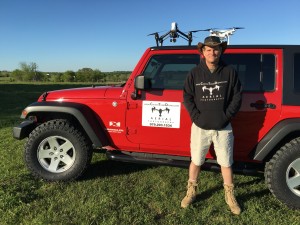Aerial Video Storytelling
Running a drone business is not only about flying a drone. One of the important skills you need to hone is creating compelling aerial video footage for your clients.
What you will deliver for your clients will be a package of aerial video and photos from the flight. This bundle will represent your company, your skill level, and your value, so deliver a quality product to every customer every time. Standardizing your deliverable will be important so you can be consistent, and efficient in assembling it after you return from the flight site.
Just after the deal is made for you to shoot a location, look it up on Google Earth to begin visualizing how you are going to tell a story about what this place is like with the video you are going to make. Look at the entries and exits to and from the road. See what a first-time visitor would experience and highlight those views from the air.
Note both the positives and the negatives of the site. When shooting a real estate project, plan to highlight entities such as ponds and lakes, ridges and hills, and all types of wildlife both domestic and freeroaming. Shy away from large power line towers, petroleum pipelines, burn piles, trash heaps, and discarded, large items such as junk cars and dilapidated barns. The realtor has to disclose the existence of those eyesores, but you do not need to showcase them.
The larger and more infrastructure-rich the site is, the more you need to compile a structured flow to your video. Have an opening scene entering the property from the road at a higher altitude, going forward but lowering as you proceed through the gate. Work your way around the residence, showing the property boundaries by flying sideways just outside the external fence line with the camera pointed inside the target area.
Show those positive aspects in order of importance, saving the main residence for the final scenes. Each scene should use a different maneuver such as a sweep, then scan, then rise, then rotate, then forward, etc. Try to get some sort of a 45-degree view from east, west, north, and south. Then mix in some overheads with the camera pitch at a 90-degree, straight down angle.
Finish up with the main house or the primary object as the parting shot in a reverse back away and up scene from 20 feet, rising up and fading out at 200 feet elevation, with 1,000 feet of distance away from your starting position.
For more tips on how to launch your drone business read Become a U.S. Commercial Drone Pilot by John Deans (2nd fully updated edition, October 18, 2016).






